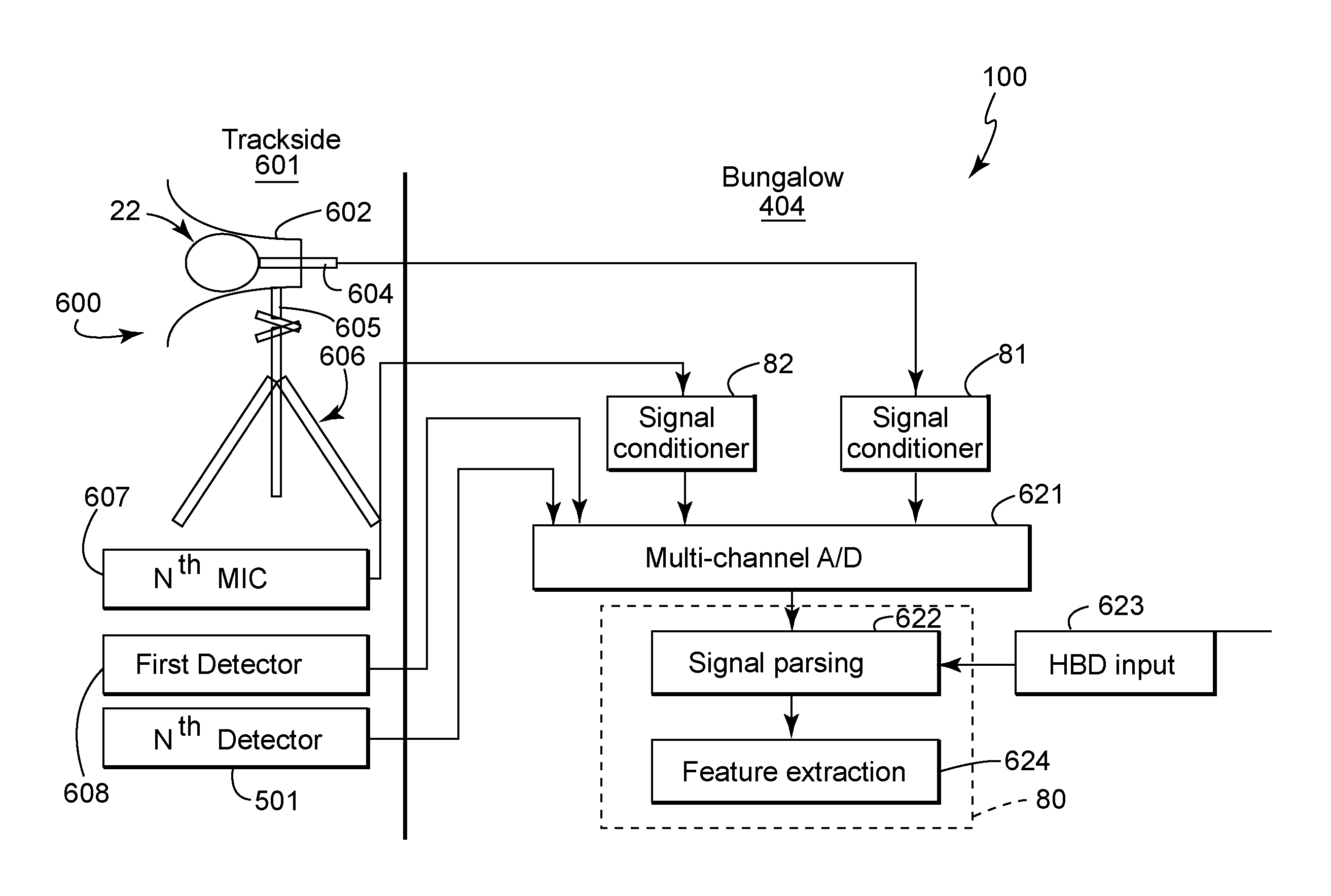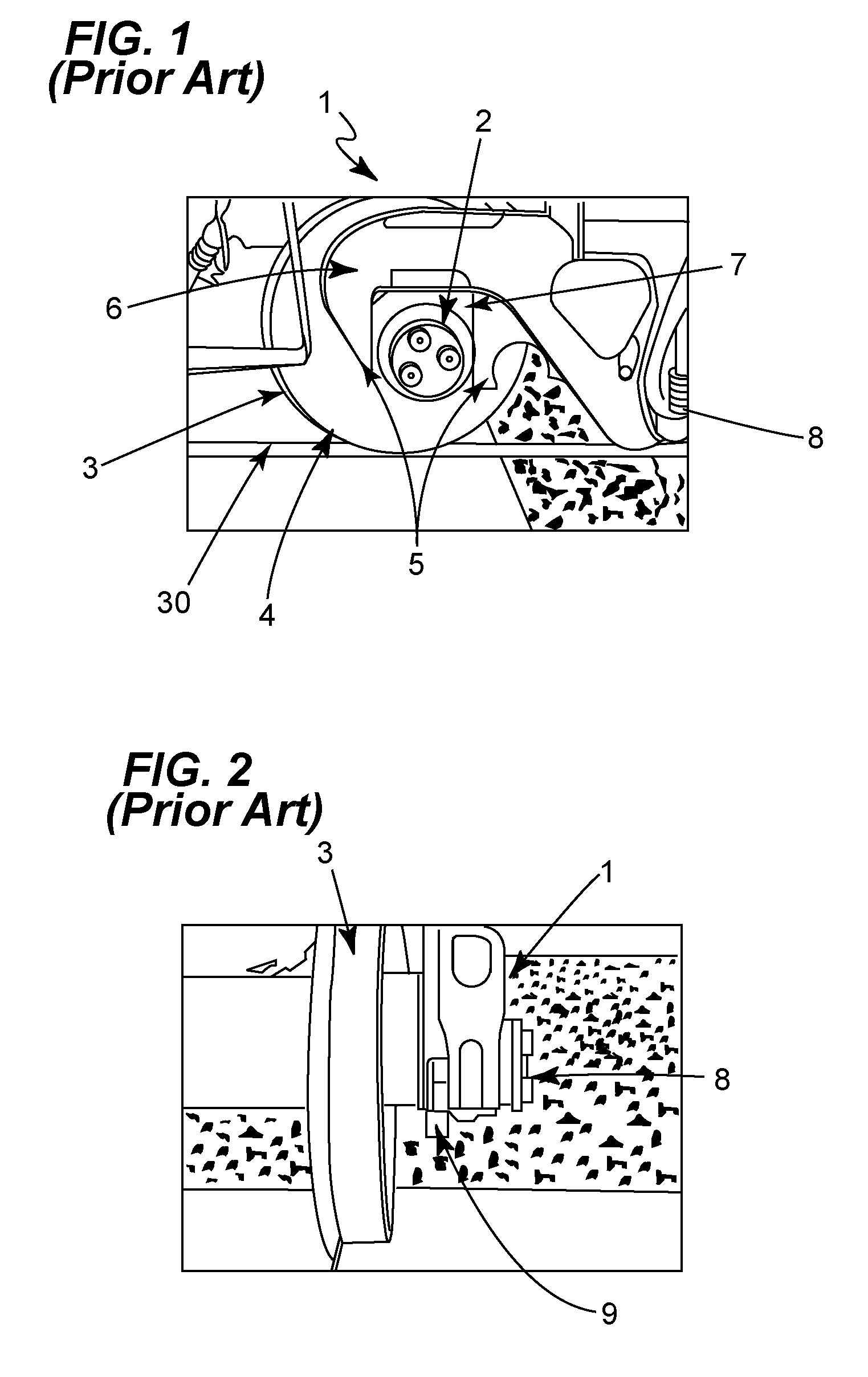Apparatus and method for identifying a defect and/or operating characteristic of a system
a technology of operating characteristic and system, applied in the direction of optical radiation measurement, fire alarm, instruments, etc., can solve the problems of wheel bearings of railcars, components that will break down, overheating and/or break down, etc., to reduce the rate of false indications, improve accuracy, and reduce false indications. the effect of the ra
- Summary
- Abstract
- Description
- Claims
- Application Information
AI Technical Summary
Benefits of technology
Problems solved by technology
Method used
Image
Examples
Embodiment Construction
[0034]A detailed description of one or more embodiments of the invention is now provided with reference to the accompanying drawings labeled as FIGS. 5, 6, 7, and 8. Unless otherwise expressly noted, use of “a” and “an” to describe and / or recite components of embodiments of the invention means “one or more.”
[0035]FIG. 5 is a diagram (not to scale) of an embodiment of an inspection system 100 that may be (or may form part of) a new railroad wayside inspection station. The inspection system 100 may include: detectors 10, 20, 72, 302, and 501; signal conditioners 81, 82; a computer processor 80; a trackside bungalow 404 (optional); and a computer-readable storage medium 92. The inspection system 100 may additionally include (or be linked with) a remote computer processor 90 located at a separate location 500. The computer processors 80 and 90 may be configured to transfer data to and from each other over a local or wide-area network 50 using software, hardware, methods, and communicati...
PUM
| Property | Measurement | Unit |
|---|---|---|
| temperature | aaaaa | aaaaa |
| temperature | aaaaa | aaaaa |
| absolute operating temperatures | aaaaa | aaaaa |
Abstract
Description
Claims
Application Information
 Login to View More
Login to View More - R&D
- Intellectual Property
- Life Sciences
- Materials
- Tech Scout
- Unparalleled Data Quality
- Higher Quality Content
- 60% Fewer Hallucinations
Browse by: Latest US Patents, China's latest patents, Technical Efficacy Thesaurus, Application Domain, Technology Topic, Popular Technical Reports.
© 2025 PatSnap. All rights reserved.Legal|Privacy policy|Modern Slavery Act Transparency Statement|Sitemap|About US| Contact US: help@patsnap.com



